The Latest from Boing Boing |  |
- Captain Long Ears: kids' comic is part Calvin and Hobbes, part Tekkonkinkreet
- Immortality for $10, courtesy of Michael Swanwick
- Ragdoll Cannon: addictive Flash game
- Bruce Sterling's Shareable.net story about astroturfer gulag
- Corruption: FCC's closed-door meetings on open Internet
- Canadian Heritage Minister smears DMCA opponents as "radical extremists"
- US IP Czar's report sells out the American public to Big Content
- iPhone 4 photography: how does it perform as a camera?
- Hitler learns that what has been leaked cannot be unleaked
- Narita airport = better than new love
- 48 Hour Film Project is in San Francisco this week
- Animated neon sign depicts pigs eagerly jumping into grinder
- Shelving system inspired by capillaries
- Dharma initiative alarm clock
- Divorce ceremonies for unhappy Japanese couples
- Apple iPhone 4: Hands-on review
- Spider crab molting
- People prefer to go south
- Rock of Ages: a different kind of art game
- Missed connections: E3 edition
- Okay, Share Happy. See if you can guess how I'm feeling now.
- Allen Ginsberg's photographs of the Beats
- Meet the "Crying Girl" con artist of Davis, California
- Do quorum sensing meds work?
- Using lucid dreams to study consciousness
- Threatening bottle opener ring
- Unpleasant drive-in theater concessions: a look back
| Captain Long Ears: kids' comic is part Calvin and Hobbes, part Tekkonkinkreet Posted: 23 Jun 2010 04:14 AM PDT  Diana Thung's kids' graphic novel Captain Long Ears reads like the most bittersweet Calvin and Hobbes strips, filtered through Taiyo Matsumoto's Tekkonkinkreet: Black & White. Diana Thung's kids' graphic novel Captain Long Ears reads like the most bittersweet Calvin and Hobbes strips, filtered through Taiyo Matsumoto's Tekkonkinkreet: Black & White. Captain Long Ears is a young boy (AKA "Michael") who pals around with a stuffed gorilla called Captain Jam. The two of them lead a rich, imaginary life as a pair of space ninjas who are traversing the galaxy in search of Captain Big Nose, who, we come to understand, is Michael's absent father. Michael's mother is an overworked single parent, and she doesn't even notice when Michael sneaks out to the local circus, where he meets a maddened baby elephant who was captured by poachers. The elephant -- "Little Big Nose" -- quickly becomes part of Michael's fantasy life, and Captain Long Ears and Captain Jam decide that they will rescue him so that he can lead them to Captain Big Nose. Thus begins a sad and exciting adventure, as heartbreak and imagination vie with one another for the heart of a likable, clever kid. Thung unapologetically mashes up Watterson and Matsumoto -- Michael is clearly Spaceman Spiff meets White from Black and White -- and the effect is really tremendous. Michael is one of the most likable and endangered kids' comic heroes in the canon; you root for him even as you worry about him, and all the while, you're laughing with him and his clever, subversive fantasy life.
|
| Immortality for $10, courtesy of Michael Swanwick Posted: 23 Jun 2010 02:19 AM PDT Eileen Gunn sez,
(Image: Michael Swanwick, Kyle Cassidy/Wikimedia Commons) |
| Ragdoll Cannon: addictive Flash game Posted: 22 Jun 2010 10:40 PM PDT  Ragdoll Cannon: a Flashgame where you fire ragdolls at targets, solving puzzles to score points. Warning: absolutely addictive. RagdollCannon3 (via Kottke) |
| Bruce Sterling's Shareable.net story about astroturfer gulag Posted: 22 Jun 2010 10:46 PM PDT Shareable.net's series of science fiction stories about societies built on sharing and sustainability continues, this time with a deeply ambivalent, darkly hilarious story by Bruce Sterling called "The Exterminator's Want-Ad," about the special rehab prison that corporate astroturfers are sent to after climate collapse: The Exterminator's Want-Ad (Image: claytonjayscott.com) |
| Corruption: FCC's closed-door meetings on open Internet Posted: 22 Jun 2010 10:21 PM PDT James from the New America Foundation says, "Following reports that of the FCC is holding closed door meetings for a possible Net Neutrality compromise, their blog disclosed this little tidbit: to the extent stakeholders discuss proposals with Commission staff regarding other approaches outside of the open proceedings at the Commission, the agency's ex parte disclosure requirements are not applicable.' How ironic that discussions on the Open Internet have become closed." |
| Canadian Heritage Minister smears DMCA opponents as "radical extremists" Posted: 22 Jun 2010 10:17 PM PDT Michael Geist sez, Canadian Heritage Minister James Moore today warned against those opposed to his Canadian DMCA, calling them "radical extremists." When Moore claims that critics of his bill are radical extremists, who is he speaking of? Who has criticized parts of the bill or called for reforms? A short list of those critical of the digital lock provisions in C-32 would include:Who are James Moore's "Radical Extremists"?
|
| US IP Czar's report sells out the American public to Big Content Posted: 22 Jun 2010 10:22 PM PDT  The US IP Czar, Victoria Espinel, has released her long-awaited "Joint Strategic Plan on Intellectual Property Enforcement," and from my cursory read, I have to say it's quite a disappointment. The three areas where US policy is completely out to lunch -- secret treaty negotiations, watchlists of "pirate nations," and evaluating claims of losses due to piracy -- are not adequately addressed in this document, which mostly focuses on flexing US trade muscle to force other countries to adopt policies that suit US needs, even if they run contrary to their own domestic priorities. The US IP Czar, Victoria Espinel, has released her long-awaited "Joint Strategic Plan on Intellectual Property Enforcement," and from my cursory read, I have to say it's quite a disappointment. The three areas where US policy is completely out to lunch -- secret treaty negotiations, watchlists of "pirate nations," and evaluating claims of losses due to piracy -- are not adequately addressed in this document, which mostly focuses on flexing US trade muscle to force other countries to adopt policies that suit US needs, even if they run contrary to their own domestic priorities.
On the issue of secret treaty negotiations, such as ACTA, the report has this to say: The Administration supports improved transparency in intellectual property enforcement policy-making and international negotiations. As such, the U.S. Government will enhance public engagement through online outreach, stakeholder outreach, congressional consultations and soliciting feedback through advisory committees, official comment mechanisms such as Federal Register notices (FRN), notices of proposed rulemaking (NPRM) and notices of inquiry (NOI), as appropriate for the relevant process. In the context of trade negotiations, the Administration will pursue these objectives consistently with the approaches and considerations set out in the President's 2010 Trade Policy Agenda, including consideration of the need for confidentiality in international trade negotiations to facilitate the negotiation process. Get that? 89 words about the need for transparency, negated by "including consideration of the need for confidentiality in international trade negotiations to facilitate the negotiation process" at the end. For background, copyright treaties have normally been the purview of the UN's World Intellectual Property Organization, where treatymaking is open and accessible to public interest groups and the press. The Bush administration moved copyright treaties to a private, closed-door negotiation called the Anti-Counterfeiting Trade Agreement, where poor countries, public interest groups, activists, and even members of the governments participating in the negotiations were prohibited. The Obama administration enthusiastically continued the ACTA work, intervening in a Freedom of Information Act request to get the text of ACTA into the open by arguing that US-led copyright treaties must be secret as a matter of "national security."
|
| iPhone 4 photography: how does it perform as a camera? Posted: 22 Jun 2010 11:00 PM PDT  (Complete iPhone 4 Hands-on review here) As a camera, the iPhone 4 is really sweet. I hopped on my bike and took the device down to the Venice Skate Park, then out to the ocean pier, then rode back to the office and tested the device out in a variety of lighting conditions with less animated subjects. The images I took in this post (other than the ones I'm in) were snapped on the fourth-generation iPhone with and without built-in flash, and have not been altered in any way other then cropping, resizing, and considerable JPEG compression to keep web file size down for this blog post. No Photoshop, no Hipstamatic, no sweetening or sharpening the image content.
For technically-minded readers who would like to examine the pixels in their native state, with no resizing, click here for one of my images at original size after some JPEG compression (file size: 668K, image dimensions: 2592 x 1936 pixels).
Above: The reclining figure and Mexican skull were on a shelf in the gloomiest corner of my studio I could find, with low light.
(All iPhone 4 snapshots in this post by Xeni Jardin. Photographs below and at the top of this blog post with Xeni, the iPhone 4, and our new skater pals Kiko and Drew at Venice Skate Park were not taken with the iPhone, but were shot by Julian Bleecker, who has more terrific skate park photos here)
|
| Hitler learns that what has been leaked cannot be unleaked Posted: 22 Jun 2010 06:41 PM PDT |
| Narita airport = better than new love Posted: 22 Jun 2010 06:27 PM PDT |
| 48 Hour Film Project is in San Francisco this week Posted: 22 Jun 2010 05:01 PM PDT The 48 Hour Film Project took place in San Francisco this past weekend — it's an annual event in 76 cities worldwide whereby people a film crew is given a character, a prop, and a line of dialogue on a Friday night and have to submit their entries by Sunday. It's really fun! Some of the shorts have even made it to Cannes. This year's SF films will be screening at the Lumiere this and next week — be sure to check some out if you have time! |
| Animated neon sign depicts pigs eagerly jumping into grinder Posted: 22 Jun 2010 04:47 PM PDT |
| Shelving system inspired by capillaries Posted: 22 Jun 2010 04:30 PM PDT  Dutch designer Caolijn Slottje made this capillary-inspired storage system out of recycled felt and rubber. The individual blocks can be mixed and matched Tetris-style to create a shape that fits your room. Dutch designer Caolijn Slottje made this capillary-inspired storage system out of recycled felt and rubber. The individual blocks can be mixed and matched Tetris-style to create a shape that fits your room. Designer's page [via Designboom] |
| Posted: 22 Jun 2010 04:19 PM PDT  It's not a real product, but as an homage to LOST, ThinkGeek lists an alarm clock that wakes you up every 108 minutes and only shuts up if you punch in the numbers from Hurley's lottery ticket. It's not a real product, but as an homage to LOST, ThinkGeek lists an alarm clock that wakes you up every 108 minutes and only shuts up if you punch in the numbers from Hurley's lottery ticket. |
| Divorce ceremonies for unhappy Japanese couples Posted: 22 Jun 2010 04:09 PM PDT There's a new trend in Japan among couples seeking a divorce: instead of just signing a bunch of papers, they're having divorce ceremonies. The service was devised by a former salesman named Hiroki Terai, who — for about $600 a month — will bring the unhappy couple into a small room called the "divorce mansion" and smash their wedding rings with a gavel in front of witnessing friends and families. One relieved husband who recently underwent the ritual told Reuters: When we smashed the ring together, I felt like "oh, this is the end of it, really" and my heart and soul felt renewed. Now I feel I can have a new life and start all over again.His wife expressed similar sentiments: The moment I saw the smashed ring, I said to myself, "Yes! That feels so good."Terai is planning to expand his services to other parts of Asia too. In cultures where rituals are an important aspect of officiating milestones and getting closure, I think it makes sense that divorce ceremonies exist. Japanese couples say I do in divorce ceremonies [Reuters] |
| Apple iPhone 4: Hands-on review Posted: 22 Jun 2010 11:01 PM PDT 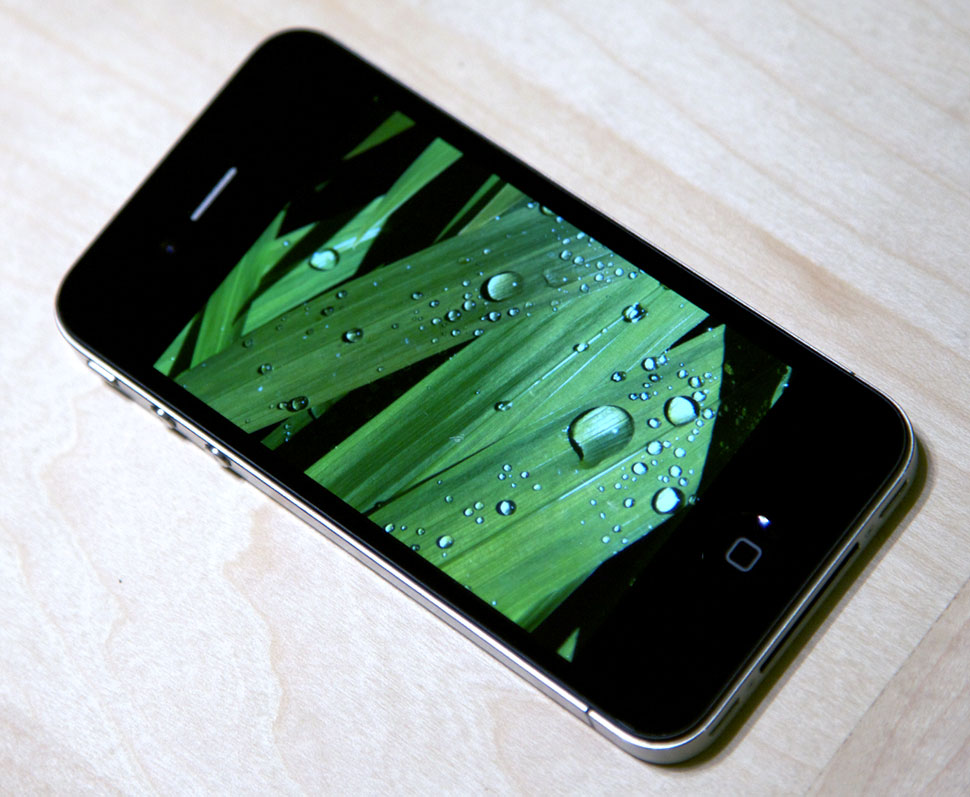 Photo: Dean Putney, shot on a Canon SLR The fourth incarnation of Apple's iPhone is an incrementally improved, familiar device—not a new kind of device, as was the case with the recent introduction of iPad. Yes, the notable features with iPhone 4—both the device and the iOS4, which came out yesterday in advance of the iPhone itself—are mostly tweaks. But what tweaks they are: Apple's focus on improvement is as much key to the quality of its products as innovation. Still, there's one flaw it can't completely eliminate: the unreliable quality of calls placed over AT&T, which remains the iPhone's only U.S. carrier. THE FORM FACTOR Thanks to a boy and a bar and a blog, we've already known for some time what the iPhone 4 would look like. The squared-off, thinner, steel-and glass form is more masculine, more substantial. Like a really hot designer watch. There are bevels and grooves and linear details that didn't exist before. It feels really nice to hold. Once my hand got used to it, the 3GS body felt more like a toy, and I didn't much feel like holding it anymore. The display is a huge leap forward. It's really crisp, and hues are more true. Side by side, the 3GS display and the iPhone 4 display show that the earlier device gives off warmer hues, more peach/red/yellow casts. The iPhone 4 seems more true to life. This is particularly noticeable when you are reading large stretches of text, or comparing one photo on both devices, side by side. On iPhone 4, whites are whiter, blacks are blacker, and the fonts really pop. It makes long reading sessions much more comfortable, and reading things in low light and high light environments are easier than before. The iPhone 4 face and back side are made from "aluminosilcate glass," which Apple says has been "chemically strengthened to be 30 times harder than plastic." Fighting instinct (my... precious!)I banged it on the side of metal tables, attempted to scuff it on the floor, and it did not sustain scratches as my iPhone 3GS and first-edition iPhone have. Granted, I didn't take a hammer or keys to it, and I don't know "Will It Blend"—I felt too protective—but this is clearly a much sturdier face. This also explains why Apple is only selling those little "bumpers" now, to snap around the edges, instead of older style cases that also protect the face and back of the device. The metal volume and mute/vibrate buttons feel nice (and are echoed in metal details on those little snap-on bumpers.) BATTERY LIFE Battery life has been an Achilles' heel with earlier versions of this device. It's noticeably improved, and that's a good thing, because much of what this device can do will require more power, over more time. You're gonna want more battery. With light use, but with 3G data and WiFi turned on the whole time, I got a full 4 days of battery life. With very heavy video recording and playback, instant messaging, email and data tethering over 3G, I got a full day of battery life. I didn't have enough time before this review to do careful benchmark testing against Apple's claims, so I can't provide specific percentages, but it felt like the battery life was a good 20-25% meatier. Photo: Xeni at Venice Skate Park with Drew, 11 (L), and Kiko, 8 (R). Shot by Julian Bleecker on a Nikon SLR Apple promises up to 7 hours of talk time on 3G and 14 hours of talk time on 2G, Standby time of up to 300 hours, up to 10 hours of solid use on Wi-Fi, up to 10 hours of video playback, and 40 hours of audio playback.
I rode my bike around town with iPhone 4, iPhone 3GS, and the original iPhone, and observed signal strength differences. Here's the thing: AT&T still sucks, and the best engineering out of Cupertino won't change that. AT&T's network includes black holes and Bermuda Triangles in many places around my town, Los Angeles. Even where signal strength was terrific, dropped or garbly calls did still occur sometimes with this new iPhone. But a little less often. Overall performance and reception capabilities with iPhone 4 did seem improved, during my limited tests. The connectivity improvements engineered into this device seem to help you make the best of a very imperfect carrier (and, of course, none of them are perfect).
Standing in one familiar trouble spot that used to drive me crazy, I often had one or two "signal strength" bars on the first-gen iPhone, maybe one or two more bars on the 3GS, and 4 or 5 bars on iPhone 4.
IS IT SPEEDY?
FACETIME Video calls are cool. Yes, video calls with Skype and video chat with AIM, iChat, and Google are a well-established part of our internet experience. But FaceTime will open up "video phone calls" to many more users. Here's how it works: using the phone feature, initiate a phone call to someone else who is also using an iPhone 4. A "FaceTime" option will be present for both users, on both ends, and if both opt to initiate FaceTime, you'll be viewing video from each other as you talk.
The iPhone 4's camera offers much more detailed shots than before, and performs better in poor lighting conditions.
Another strong point of the new version of iPhone's camera is the ability to make better sense of high, low, and medium light within one shot. When you touch on an area of the camera's view to focus, the iPhone automatically senses factors such as exposure, and auto-adjusts for you based on the selected focal point.
iPhone's built-in flash is a welcome addition, and will no doubt lead to a proliferation of attractive, boozed-up people in better-lit nightclub snapshots on Facebook (and a new generation of wannabe Cobrasnakes). Three options with the flash: on, auto-flash, or off. We're still talking about a tiny flash on an iPhone, so it doesn't perform like a pro flash on a $2500 SLR camera (you're only going to be able to illuminate so far), but it's quite a start. I was able to get intelligible shots of a completely dark room, where without the flash, I'd get nothing but black. One thing I haven't tried yet, which I do with my point-and-shoot digital cameras: making DIY "gels" for the flash. Scotch tape, maybe embellished with highlighter pen ink for rose, yellow, or other human-friendly gel colors. At an L.A.-area skate park, Kiko, 8, and Drew, 11, mug for a photo. Taken with iPhone 4 VIDEO
LOCATION TAGGING FOR PHOTOS AND VIDEOS
IMOVIE The iPhone 4 Video snobs may pooh-pooh the notion of editing on a mobile device (which requires a vastly more simplified and less powerful editing toolkit than one has with FinalCut Studio on an 8-core Mac Pro), but hey, a few years ago these same people were also pooh-poohing the notion of shooting video on a mobile device. What this means to me: if I'm traveling, I can shoot, edit, and produce little reports or impressionistic video vignettes from the field without having to have even a laptop. That is a very big deal for some people (fine, by "some people," I really mean, "me"). And for non-videobloggers, it means you'll now be getting lots more annoying (but visually good quality) home movies of your relatives' Hawaiian vacations in your in-box. When you're video editing on the iPhone 4, there's a theme sound library to work with, and you can even add songs from your iTunes/iPod library as music beds (ahem cough awesome but surprising, given the possible copyright conflicts ahem cough).
ORIENTATION LOCK
TETHERING
THE GYROSCOPE
Would I buy it? Yes.
|
| Posted: 22 Jun 2010 02:32 PM PDT Enjoy this time-lapse video of a Japanese spider crab shedding its shell. (via Pink Tentacle, thanks Antinous!) |
| Posted: 22 Jun 2010 02:20 PM PDT A new study suggests that people prefer southern travel routes to northern routes. Why? Apparently, we associate north with "up" and things that are "up" are harder to get to, elevated, more difficult to attain, or physically more demanding. According to Tufts University psychologist Tad Brunyé, also of the U.S. Army Research, Development, and Engineering Command, volunteers in the study estimated that it would take much longer to drive between locations when traveling south to north instead of the opposite way. From Science News: Travelers have southern bias |
| Rock of Ages: a different kind of art game Posted: 22 Jun 2010 02:06 PM PDT While I'm still in the thick of preparing the deluge of words on the good things I did see at this year's E3 (somewhere buried underneath the thick strata of identikit first person shooters were several truly rare shining gems), here's the one game I'm depressed I didn't see: Rock of Ages, the sophomore effort from Chile's ACE Team due for downloadable release in spring 2011. At heart a seemingly simple defense-busting action-physics game, ACE Team (the same as behind recently released [and just as fantastically stylized] first-person beat-er Zeno Clash) has upped their own ante and dressed it as a fully realized art-historical world from the Renaissance, Rococo and Gothic eras. More information should be shortly forthcoming from publisher Atlus via their teaser site here. Rock of Ages [ACE Team] |
| Missed connections: E3 edition Posted: 22 Jun 2010 01:52 PM PDT  Via my trusty E3 companion Sarah Brin, the missed connections from this year's Expo, for when you really, truly, honestly thought that booth babe (or bro) only had eyes for you: Via my trusty E3 companion Sarah Brin, the missed connections from this year's Expo, for when you really, truly, honestly thought that booth babe (or bro) only had eyes for you: You were the tallest one of them all, armor clad and looking rather delicious. I don't know- I suppose I have a bit of a costume fetish (and video game boys), but wow. You looked astounding in that gear. I can even begin to imagine what you'd look like without it, nor do I really care. All I am sure of is that I really want you. Seriously, haha. Costumed and masked- your identity is safe. Hell, I don't care which Helghast soldier I get. I just want one of you.los angeles missed connections classifieds "e3" [craigslist, via Sarah Brin, photo via flickr's ze_bear] |
| Okay, Share Happy. See if you can guess how I'm feeling now. Posted: 22 Jun 2010 01:18 PM PDT The practical applications aren't immediately clear, and this certainly falls under the rubric of Krazy Koncept Devices That May Never See Daylight. But at least we can say this much: There's now an ice cream machine that passes judgment on the sincerity of your smile, and either rewards or punishes you based on its decision. The "Share Happy" device is the spawn of SapientNitro, "the world's first customer experience company," and Unilever, which is the world's biggest manufacturer of ice cream (Ben & Jerry's, Good Humor, Wall's) as well as the corporate home of Axe body spray, Dove soap and Hellman's mayonnaise. The thing is being demoed this week at an international advertising show in France. According to Ian Maskell, Global Brand Development Director for Wall's at Unilever: "We're really excited about the possibility this new technology holds for Unilever. It offers a revolutionary new way for consumers to buy ice cream and, simultaneously, a revolutionary brand experience."* It isn't the possibility that there may someday be Share Happy machines on every corner that worries me. What worries me is what's going to happen when they get together and decide to wipe the smiles off our faces. *Gibberish quote possibly machine-translated from French. |
| Allen Ginsberg's photographs of the Beats Posted: 22 Jun 2010 01:10 PM PDT 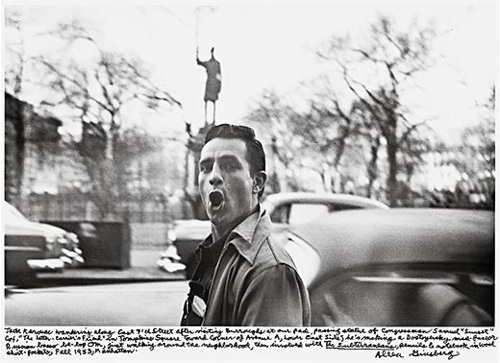 From 1953 to 1963, poet Allen Ginsberg (below) snapped thousands of candid photos of his friends, documenting the personal, intimate, and spirited lives of the writers and artists who created the major works of Beat culture. His images of Jack Kerouac (above), William S. Burroughs, Lawrence Ferlinghetti, Peter Orlovsky, and others are now on display at the National Gallery of Art in Washington DC. The exhibition, titled "Beat Memories: The Photographs of Allen Ginsberg," runs until September 16. The hardcover exhibition catalog is $32 from Amazon. From Smithsonian: "Allen Ginsberg's Beat Family Album" (Smithsonian) Beat Memories: The Photographs of Allen Ginsberg (Amazon) |
| Meet the "Crying Girl" con artist of Davis, California Posted: 22 Jun 2010 01:30 PM PDT Meet the "Crying Girl" con artist of Davis, California, who has earned a spot on the Davis Wiki, with photos tracked down by the Wiki's users. The "crying girl" is a particularly prolific and notorious scammer who has been victimizing people in Davis. She is a dark haired girl who has dyed her hair reddish blond who sometimes wears heavy, tear-smeared make-up. She hangs out around the downtown area or in front of grocery stores, clutching a train schedule and approaching people with one of two stories. Depending on the age and gender of her mark, she alternates between a story involving her mother stranding her in Davis and another involving her boyfriend dumping her and then stranding her in Davis. She has been known to fake crying during these encounters, often with real tears. The amount requested for "train tickets" will generally be around $40 dollars, give or take a few dollars to lend legitimacy. Reportedly, she has also begun telling people a new story wherein she purports to be homeless. She has been known be become aggressive when people make her mad and confrontations with her should be avoided.Crying Girl Con Artist (Thanks, Dale!) |
| Posted: 22 Jun 2010 11:39 AM PDT Gizmodo's Joel Johnson went to Belize to check out experimental medicines that interfere with quorum sensing -- bacteria's ability to sense other bacteria -- a key step in preventing them from 'activating' and making you ill. The research is underwritten by antivirus supremo John McAfee, who is quite eccentric. Furthermore, it's hard to develop rigorous test controls, and the fact that alcohol is the main ingredient makes any antiseptic claims immediately suspect. Topic-Qx is Quorumex's first product, a topical solution of plant materials containing purported anti-quorum sensing properties. It's green, smells like mouthwash, and stings when applied. Dr. Adonizio later explains bashfully that the sting is from the alcohol in which the plant matter is suspended. Alcohol is the easiest spray-on solution for a fledgling company, but she worries that skeptics might chalk up Topic-Qx's antibacterial properties to the alcohol.My favorite part is when he calls scientists to arrange independent testing, but they don't want to see it. It turns out that some of them are interested in developing their own anti-quorum-sensing meds, and dare not expose themselves to others' intellectual property. From Antivirus to Antibiotics, McAfee Searches for a Last Cure [Gizmodo] |
| Using lucid dreams to study consciousness Posted: 22 Jun 2010 11:12 AM PDT Two weeks ago, I posted about a psychologist studying whether videogames were good training for lucid dreaming. Of course, a lucid dream is one in which you're aware of the fact that you're dreaming and can often control what happens. This week, New Scientist looks at how understanding brain activity during lucid dreams may shed light on the mysteries of consciousness. For example, observing what regions of the brain light up during lucid dreams may give clues about where, and how, "self-awareness" emerges. From New Scientist (painting by Salvador Dalí): "Want to find your mind? Learn to direct your dreams" |
| Threatening bottle opener ring Posted: 22 Jun 2010 10:35 AM PDT 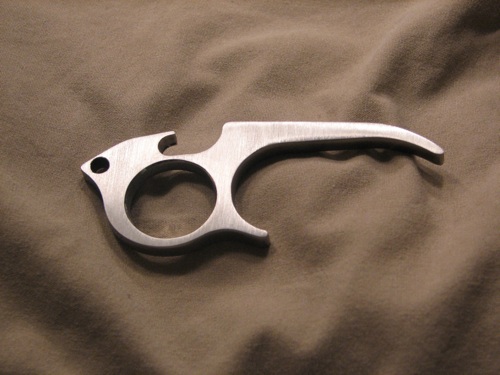 Above is a very threatening looking device that is actually just an edgy bottle opener ring. It's made by Dustin Wallace, who is perhaps best known for his equally intense Robotagami sculptures available in the Boing Boing Bazaar/Makers Market. The Bottle Opener Ring comes in several sizes and is $49.99. I wouldn't suggest taking it through airport security. Dustin writes: Bottle Opener Ring |
| Unpleasant drive-in theater concessions: a look back Posted: 22 Jun 2010 09:46 AM PDT Today's foray into culinary anthropology takes us to the drive-in theater, a once thriving venue in which people watched films from their cars while lined up in a parking lot. As odd as that concept sounds, it pales in comparison to the things those early entertainment pioneers ate. Hot Meat The eating of meat was done unapologetically, with high fat content an apparent selling point. Indeed, the presentation of hot meat selections approached the pornographic. Tobacco Treats Still legal and widely available, cigarettes were considered a popular dessert.
Phallic Snacking Fellatio was as popular then as it is now, but must have been discouraged at the drive-in, because a large variety of substitutes were offered.
Perhaps the most unusual aspect of concession cuisine was a perverse guilt that resulted in the snacks and drinks being portrayed as being eager to be consumed.
This led to a kind of pathos not seen since the never-seen Jerry Lewis harlequin-in-a-concentration-camp dramedy, The Day the Clown Cried.
|
| You are subscribed to email updates from Boing Boing To stop receiving these emails, you may unsubscribe now. | Email delivery powered by Google |
| Google Inc., 20 West Kinzie, Chicago IL USA 60610 | |


 The Clarion West Writers Workshop has started their annual Write-a-thon fundraiser, and celebrated science fiction writer
The Clarion West Writers Workshop has started their annual Write-a-thon fundraiser, and celebrated science fiction writer  Personally, I loved to buy stuff: I admired a consumer society. I sincerely liked to carry out a clean, crisp, commercial transaction: the kind where you simply pay some money for goods and services. I liked driving my SUV to the mall, whipping out my alligator wallet, and buying myself some hard liquor, a steak dinner, and maybe a stripper. All that awful stuff at the Pottery Barn and Banana Republic, when you never knew "Who the hell was buying that?" That guy was me.
Personally, I loved to buy stuff: I admired a consumer society. I sincerely liked to carry out a clean, crisp, commercial transaction: the kind where you simply pay some money for goods and services. I liked driving my SUV to the mall, whipping out my alligator wallet, and buying myself some hard liquor, a steak dinner, and maybe a stripper. All that awful stuff at the Pottery Barn and Banana Republic, when you never knew "Who the hell was buying that?" That guy was me. 

















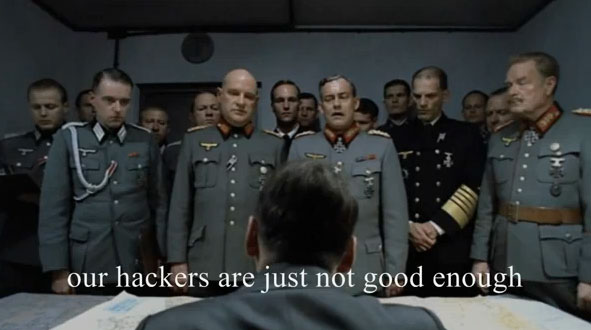




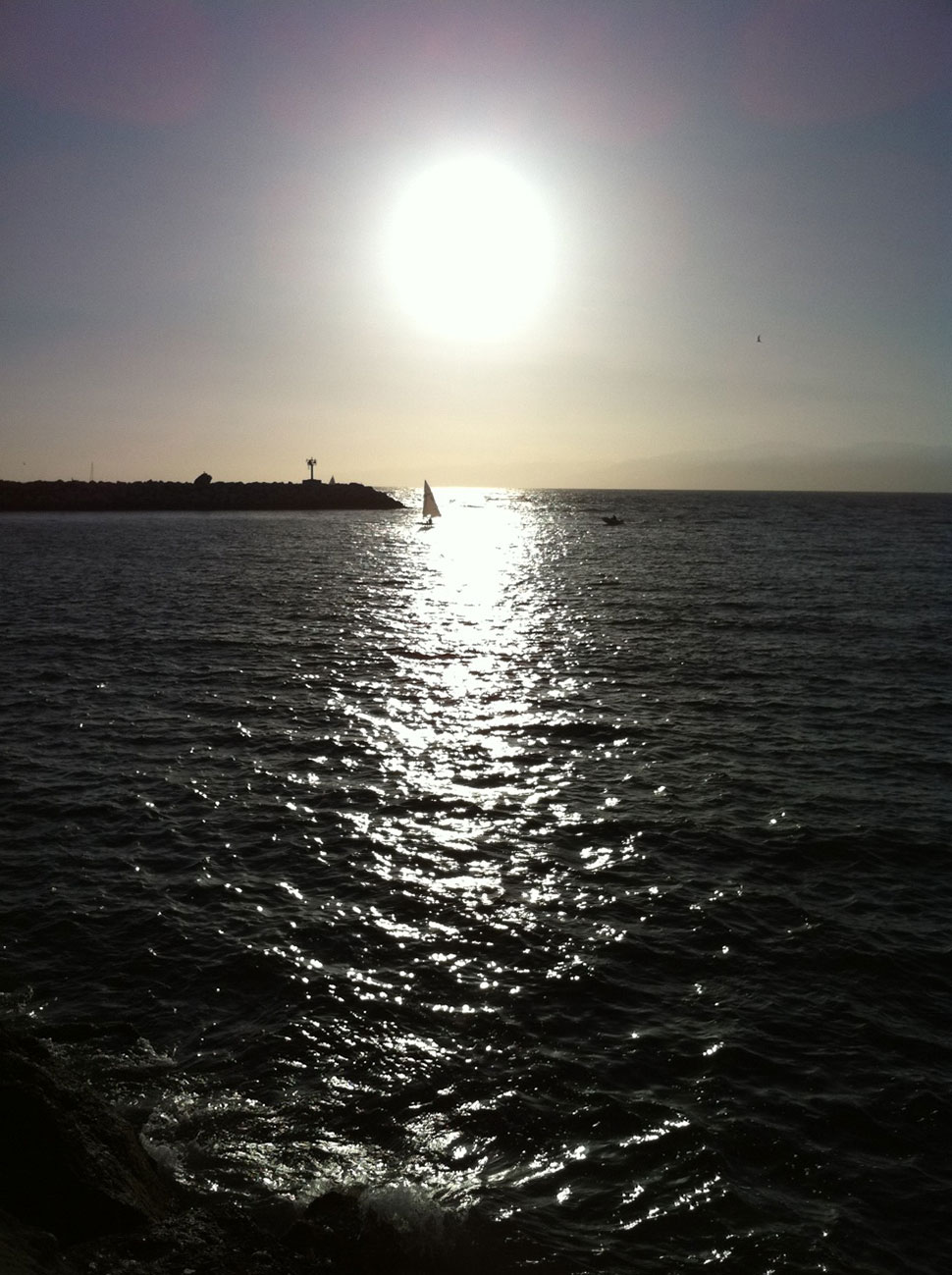
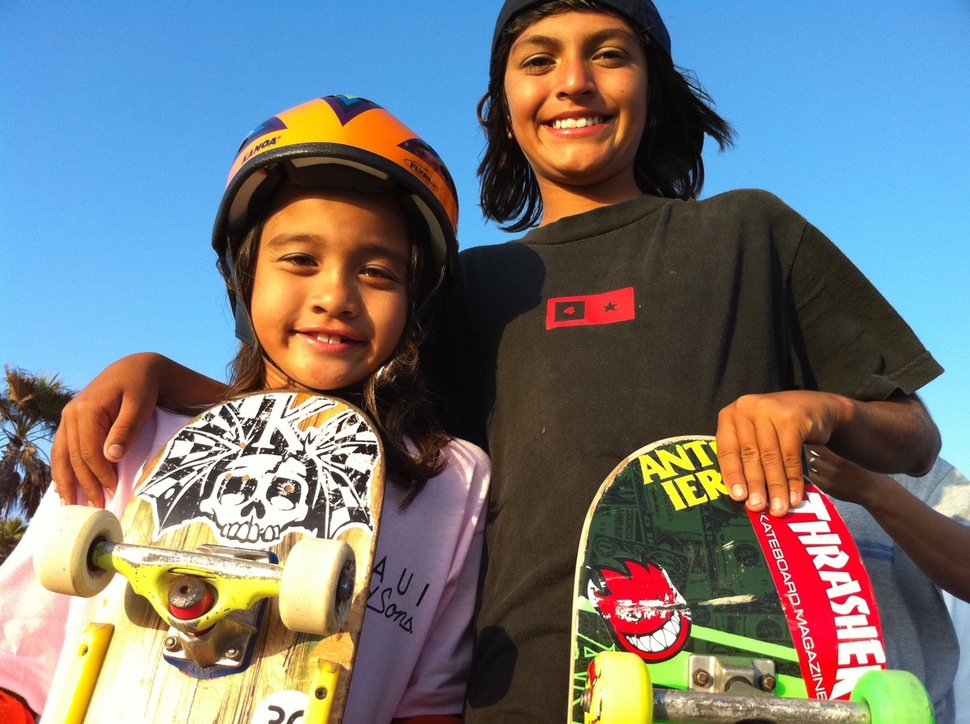
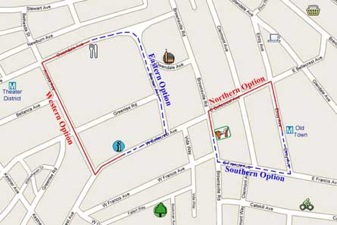 Real-world experiences underlie avoidance of northern routes, Brunyé proposes. Young children learn that as objects and locations get higher, they become harder to attain. Examples include reaching for a toy on the counter, climbing the stairs and jumping.
Real-world experiences underlie avoidance of northern routes, Brunyé proposes. Young children learn that as objects and locations get higher, they become harder to attain. Examples include reaching for a toy on the counter, climbing the stairs and jumping.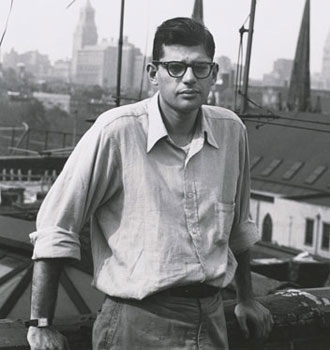 Ginsberg started taking photographs as a young man, in the 1940s, and kept doing so through 1963, when his camera was left behind on a trip to India. The result was a kind of Beat family photo album: informal, affectionate, full of personality—and personalities. We see, among others, Jack Kerouac, William Burroughs, Neal Cassady and Orlovsky. Ginsberg liked to say he was "fooling around" with the camera (whether behind or before it). These were pictures, he felt, "meant more for a public in heaven than one here on earth—and that's why they're charming...
Ginsberg started taking photographs as a young man, in the 1940s, and kept doing so through 1963, when his camera was left behind on a trip to India. The result was a kind of Beat family photo album: informal, affectionate, full of personality—and personalities. We see, among others, Jack Kerouac, William Burroughs, Neal Cassady and Orlovsky. Ginsberg liked to say he was "fooling around" with the camera (whether behind or before it). These were pictures, he felt, "meant more for a public in heaven than one here on earth—and that's why they're charming...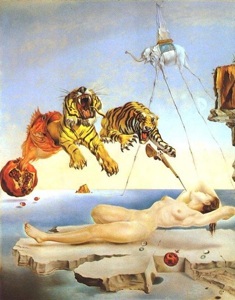
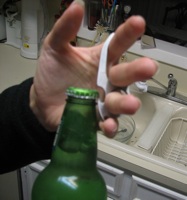 This ring combines functionality with design enabling you to get some looks while you open your choice of beverage. You are able to wear this ring on the knuckle side or palm side, whichever suits you. It is designed to fit on your ring finger and for you to use your index finger for leverage. If wearing it isn't your style, you can put it on your key chain as well.
This ring combines functionality with design enabling you to get some looks while you open your choice of beverage. You are able to wear this ring on the knuckle side or palm side, whichever suits you. It is designed to fit on your ring finger and for you to use your index finger for leverage. If wearing it isn't your style, you can put it on your key chain as well.
No comments:
Post a Comment